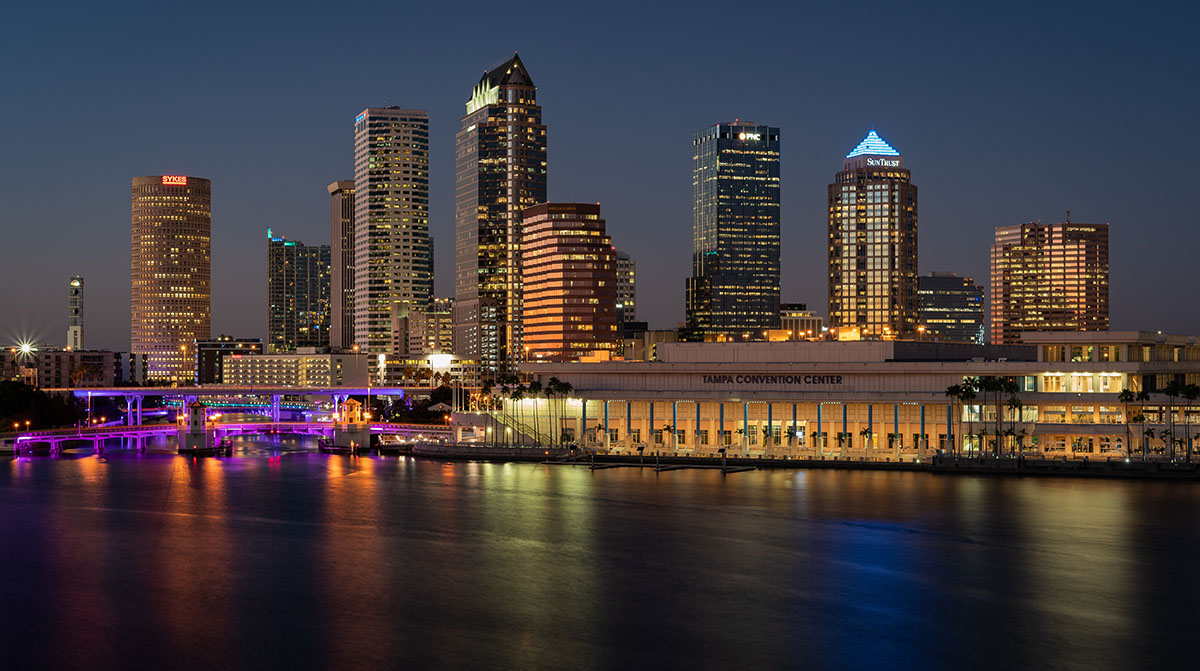A 7-Step Guide for Writing Your Business Plan
Have you ever experienced a burst of creative genius, fabricated something lovely, and had someone say, "Wow! You should sell that" or, "That's a great business idea!"
It's a great feeling to know that something you consider a hobby could become a way to make some extra cash.
You start selling a few pieces here and there, and people seem to enjoy what you create.
As demand for your creations starts to grow, you wonder, "What if I opened my own retail shop? Could it be possible?"
The short answer is yes! If you have something creative to sell and believe there is a market for it in your area, you can absolutely open your own shop and become a business owner.
Key Takeaways You Will Get From This Article
1. The foundation for any successful business is a business plan.
2. Your business plan should be used as a roadmap for how to structure, run, and grow your new business.
3. A financial plan is one of the most critical sections of your business plan for investors.
4. A solid business plan can convince critical people working with you or investing in your company that they've made the right choice.
All it takes is some imagination, investment, and a whole lot of hard work. To help you along the way, we are presenting a four-part blog series on How to Build Your Retail Store from the Ground Up.
In this series, we'll discuss the key pieces you'll need to get your shop up and running.
Let's start with the foundation for your shop – your business plan.
Table of Contents
- Laying the Foundation for a Successful Shop
- Why You Need a Business Plan
- How to Write a Business Plan for Your Retail Store
- Move Forward with Your Retail Shop
Lay the Foundation for a Successful Shop
In a way, building a retail shop from the ground up is like building a house.
Once you have the blueprints together (in this case, the idea and products you will sell), you can start work on the foundation.
The foundation for any successful business is a business plan.
You may want to jump right in and start looking for a storefront, but it's essential to get all of your ideas down on paper first.
If the thought of creating a business plan completely overwhelms you, that's okay.
It's a big undertaking, especially for a sole proprietor, but we're here to lay out the steps to help you through.
First, let's explore why you need a business plan.

Why You Need a Business Plan
Maybe you're wondering, "Why do I need a business plan?
I'm just going to sell my product and make money; do I really need to write that down?"
Creating a written business plan is vital for several reasons, all of which will help your shop succeed.
Here are five of them:
1. Educate Investors
If you don't plan on funding your shop entirely on your own, a well-crafted business plan with your company description will help you convince investors or the bank that they should fund your shop.
2. Seek Employees and Partnerships
You'll certainly need employees to help you around the store, and partnerships with other local businesses can drive traffic to your shop.
Your well-organized business plan can get these people excited about working with you and start drawing the attention of potential customers.
3. Set Realistic, Attainable Goals
Laying out your entire plan on paper can help you set clear goals for your new business.
It also gives you something to go back to when it's time to revisit those goals.
4. Create a Timeline
Your business plan can help you create a timeline for getting your shop up and running.
Define a target opening date, and work backward from there.
5. Stay Organized
Your business plan will be an important point of reference for you during the process of starting your business.
You won't have to worry about forgetting a step with everything documented.
Business Plans Help Run Your Business
A good business plan will guide you through each stage of starting and managing your business.
Your business plan should be used as a roadmap for how to structure, run, and grow your new business.
It's a way to think through the key elements of your business, everything from your marketing strategy to a competitive analysis of your target market.
A traditional business plan can help you get funding or bring on new business partners.
Investors need to know they'll see a return on their investment.
A solid business plan can convince people that critical people working with you or investing in your company that they've made the right choice.
Now that you know why you need a business plan, let's talk about writing one.
How to Write a Business Plan for Your Retail Store
When you’re ready to start writing your business plan, it can be difficult to know where to start. To save you from staring at a blank page for a while, here’s a simple outline to follow when writing your plan:
- Executive Summary
- Company Overview
- Market Analysis
- Products and Services
- Marketing Plan
- Logistics and Operations Plan
- Financial Plan
You can find free business plan templates with a quick Google search, and there is also business plan software available.
Keep in mind that there is no right or wrong way to build a business plan.
You should know a few things before starting your business plan, like who your target audience is, your organizational structure, and you should have a detailed description of your business in mind.
Feel free to do some template research and pull pieces that you like from different sources as inspiration for your complete business plan.
For this post, we'll stick to the example outline above to create an effective business plan.
Let's take a deeper dive into each of those pieces.
1. Executive Summary
The executive summary is a key element of your business plan.
It's a short section of your business plan designed to give the reader a taste of the information inside.
This is possibly the most important part of your business plan, whether you're a startup company, limited liability company, or anything in between.
Potential investors may only ask to see your executive summary, so make sure it is readable, concise, and informative.
This section of your business plan should include a detailed business description.
It needs to inform the reader of what your business does, where it currently stands, where you aspire to be in three to five years, and why you will find success.
When constructing your executive summary, be sure to include these points:
- Mission Statement: Explain what your business does and why you are in business.
- General Company Information: This is information about where your business is located and who is involved. You can use this section to briefly share the story of how your hobby became a business.
- Products and Services: Include information on your product – what you sell and who you sell it to. If you plan to expand to offer additional products, you can share that information as well.
- Financial Information: Especially if you are on the hunt for investors, be sure to include your funding goals and other pertinent financial information at the end of your executive summary.
- Future Plans: Leave your reader with an inspiring statement on where you plan to take the business in the future.
Remember, you don't have to stick to this format. If you feel there is other vital information to include in your executive summary, go for it!
One last tip: write it last even though the summary comes first.
That way, you'll have an easier time summarizing the information included in your business plan.
2. Company Overview
The company overview is another key element to any type of plan.
Your company overview should be a high-level explanation of who you are, what you do, and why you do it.
This section should show the reader what's different about you and why you'll be successful.
Here are some ideas of points to include in this section of your business plan:
- Your business structure (i.e., sole proprietorship, general partnership, limited partnership, or incorporated company)
- What you sell
- Your industry/competition
- The vision, mission, and values your business will uphold
- History of your business
- Short and long term S.M.A.R.T (specific, measurable, attainable, realistic, timely) business goals
- Your team, including any key employees and their salaries
Use this section to explain what makes your business unique and why people should be excited about working with you!
3. Market Analysis
Potential investors or partners may not ask to see the market analysis section of your business plan, but it will end up being one of the most helpful sections for you.
For this section, you will complete research and gather information on the market for your products.
Make sure you thoroughly research and make informed estimations to document the following:
- The size of your potential market
- Your ideal customer profile
- The trends and trajectory of the industry
In this section, you'll also want to complete a SWOT analysis.
This is a documented chart of your business's strengths, weaknesses, opportunities, and threats.
Your SWOT analysis should look something like this:
|
Strengths (Internal factors)
|
Weaknesses (Internal factors)
|
|
Opportunities (External factors)
|
Threats (External factors)
|
4. Products and Services
In this section, you will also want to complete an analysis of your competitors. For example, who is selling similar products in your area?
Who sells similar products online?
Please include a list of businesses you would consider direct competitors and how you plan to make your shop stand out from theirs.
Obviously, what you'll need to include in this section are your products! If you are going to be selling many different kinds of products, have a brief description of each.
You can write more detailed descriptions if you only offer a few different products.
Also, within this section, it's a good idea to go into detail about your customers. Consider the following:
- Who is your ideal customer or target market?
- Where do they live?
- Where do they work?
- What is their age range?
- What is their level of education?
- How much do they earn?
- Do they have any common behavior patterns?
- How do they spend their free time?
- What technology do they use?
- What are their values, beliefs, or opinions?
You may not be able to answer all of these questions straight away, so don't be afraid to make educated guesses based on your experience and research.

5. Marketing Plan
Investors may want to know how you plan to market your new business.
A good marketing plan will focus on your ideal customer and how to engage them with your business.
For example, if you have learned that many of your customers are avid Facebook users, you should include a budget for Facebook ads in your marketing plan.
Here are other items you will need to include:
-
The price of your products
-
The products you are selling
-
Your plan for getting the products in front of customers
-
The location where you will sell your products
If you plan to sell your products through different channels, such as a brick-and-mortar shop and an online store, be sure to include that information here as well.
6. Logistics and Operations Plan
The logistics and operations plan portion details all aspects of your business operation, from gathering supplies to tracking inventory.
Answer the following questions in this section:
-
Where do you get the materials you need to produce your product?
-
Will you create, manufacture, wholesale, or drop ship your products?
-
How long does it take to produce your products?
-
How will you handle a busy season or demand spike?
-
What tools and technology do you need to get up and running?
-
How much inventory will you keep on hand, and where will you store it?
-
How will you keep track of inventory?
If you're not sure how you'll handle inventory or payments, we can help with that!
Electronic Merchant Systems offers complete solutions that can process payments and help you manage your business. If you want the best payment processing solutions, click here for a free consultation with EMS.
7. Financial Plan
This will probably be one of the most critical sections of your business plan for investors.
The amount of detail you need to include in the financial statement portion of your business plan will vary based on your audience and goals.
However, investors will typically want to see these three significant aspects of your financials:
-
Income statement: details your revenue for a specific time period. If you don't have revenue yet, forecast this information based on your plan for reaching customers.
-
Balance sheet: shows how much equity you have in the business. List your assets (what you own) versus your liabilities (what you owe). Assets – Liabilities = Equity
-
Cash-flow statement: details when revenue comes in and expenses go out. Again, if you don't have revenue yet, you can forecast this information. You may also find it helpful to forecast your cash-flow statement as you move forward with your business to plan for gaps and adjust operations as necessary.
Download our free e-book: Chargebacks: A Complete Guide.
Moving Forward with Your Retail Shop
We hope that you find this information helpful in building the foundation for your new business. But, remember, it's YOUR business, so adapt the plan however you see fit.
At the end of the day, your business plan is a document that represents you and all you hope to achieve.
So, take your time, do your research, and put your best foot forward.
Are you eager to learn more? Check out the other three posts in our How to Build Your Retail Store from the Ground Up series here:
Part Three: Marketing and Merchandising
Part Four: Promote Customer Loyalty
Sources: Shopify, Shopkeep, TheBalanceSmb




